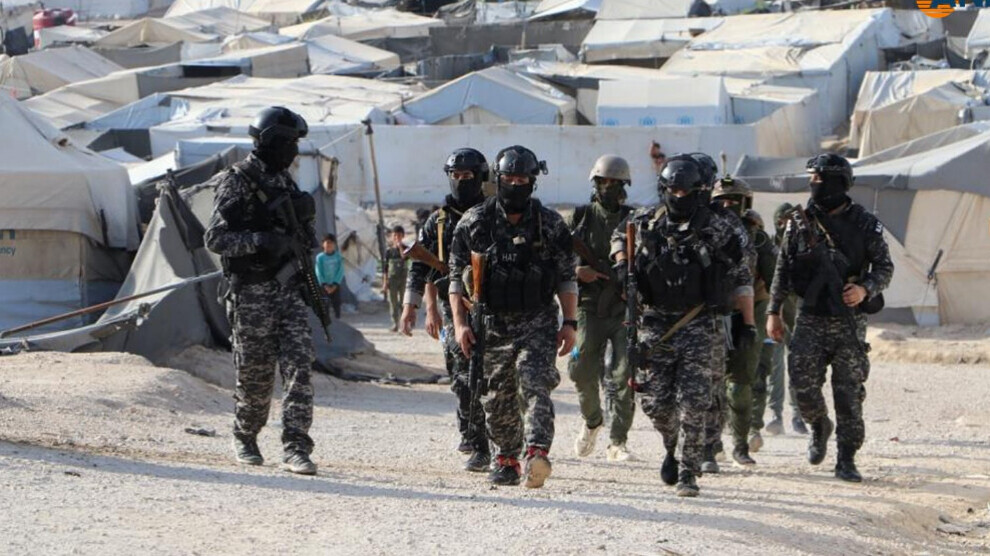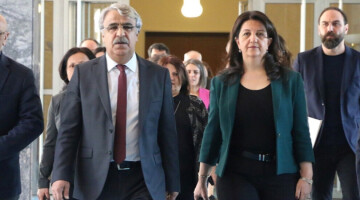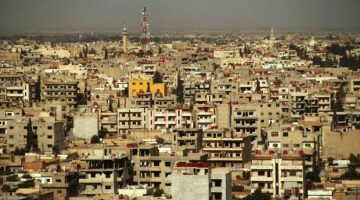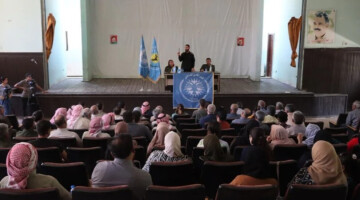The Hol Camp, located near the Hol district, 45 kilometres east of the city of Hesekê, was established in 1991 by the United Nations High Commissioner for Refugees. The Hol Camp, which became a residence for Iraqi refugees fleeing the Gulf War, once again became a shelter for refugees following the US military intervention in Iraq in 2003. After ISIS occupied Mosul, Iraqi refugees took shelter in the camp which the Syrian Democratic Forces (SDF) brought under its control in 2015. The population of the camp has increased four times when ISIS families were placed in the camp after the liberation of Baghouz, the last stronghold of ISIS, in March 2019.
67 THOUSAND REFUGEES FROM 50 COUNTRIES
Described as "one of the most dangerous camps in the world", the Hol Camp hosts 67 thousand refugees from 50 different countries, such as Iraq, Syria, Uzbekistan, Azerbaijan, Turkey, Turkmenistan, Kyrgyzstan, Chechnya, East Turkestan, Indonesia, Russia, Germany, Belgium, Norway, Netherlands, Finland, Egypt, Morocco, Algeria and Tunisia.
HEADQUARTERS OF THE ISIS CALIPHATE
After tens of thousands of refugees and ISIS families were settled in the camp following the liberation of Baghouz, it gradually became a hub for ISIS re-emergence and its supporters who lost their last stronghold. The ISIS leadership ordered the re-establishment of ISIS rule through executions by ISIS secret cells who infiltrated the camp as refugees. ISIS chose the camp as the new headquarters of the caliphate.
A new group called “El Hisbe” which was established following the re-introduction of the ISIS caliphate, is seeking to restructure the group. Describing itself as 'Jihadist', El Hisbe organizes secret training, establishes courts and carries out executions inside the camp.
TURKISH INTELLIGENCE GIVES ORDERS
ISIS cell members captured by the Internal Security Forces confessed that they had taken the orders for executions and torture in the camp from the areas under Turkish occupation.
The confessions ANF published on June 23, 2021, revealed that cell members had received instructions from an ISIS leader, Cerrah Ebu Ömer, who was smuggled out of the camp by the Turkish intelligence service MIT.
While the SDF carried out an operation in the Hol Camp and arrested members of a four-person cell, the cell’s emir Mersul Sami Muhammed Necim, also known as'Abu Velid' and other members Selam Sami Muhammed, Hüsam Tala Feryad and Mervan Halid Duleymi confessed that they had received the instructions of all the attacks they carried out in the camp from the Turkish intelligence agents in the occupied areas.
MIT AND IHH RESCUE ISIS MEMBERS
Turkey’s MIT assigned the Humanitarian Relief Foundation (IHH) to get ISIS members and their families out of the Hol Camp. The IHH has a lengthy criminal record concerning its relations with mercenary groups. ISIS members who were caught while attempting to escape from the camp admitted that all expenses were covered by the Turkish state.
SDF AND AUTONOMOUS ADMINISTRATION BEAR THE WHOLE BURDEN
The Autonomous Administration and the SDF repeatedly called on the countries of which ISIS members hold citizenship, warning that keeping so many cell members together without trial would pose a great danger. The Autonomous Administration proposed forming an international court together with other countries or to prosecute ISIS members in their countries of origin. It has carried out important diplomatic contacts on the subject. However, no practical steps have been taken so far.
FIRST STAGE OF HUMANITARIAN AND SECURITY OPERATION
Under the supervision of the North-East Syrian Internal Security Forces and with the participation of the SDF, YPG and YPJ forces, an operation dubbed "Humanitarian and Security Operation" was launched on March 28, 2021 in the Hol camp where ISIS secret cells increased their activities. Following the operation, dozens of cells were disbanded and nearly 300 ISIS members, including their ringleaders, were captured.
HOW DID ISIS REORGANIZE?
Shortly after the operation, ISIS activities in the camp re-emerged. Having received a major blow from the operation, ISIS mobilized its passive members who infiltrated into the camp to 'reorganize'. Following the ISIS attack on the Sinaa Prison housing ISIS members on January 20, 2022, the security forces took intense security measures in the region and prevented possible attacks.
In the meantime, it was reported that the weapons used by ISIS members were delivered to the camp by water tanks and tankers in cooperation with the MIT, FSA and ISIS cells. An ANF report titled "Blow to MIT Network in Hol Camp" published on December 4, 2021, revealed that ISIS members caught by the Internal Security Forces during an attempt to transfer weapons and ammunition to the Hol Camp put the finger on the Turkish state's scheme. ISIS members said that “weapons and ammunition came from Girê Spi. There is more to be delivered”.
SECOND STAGE OF OPERATION
The General Command of the North and East Syria Internal Security Forces announced on August 25 that they launched the second phase of the "Humanitarian and Security Operation" to protect the Hol Camp from the ISIS threat. The General Command stated that the Hol Camp had turned into a hub for families and cells affiliated with ISIS, adding that 43 terrorist attacks were carried out and 44 camp residents, including 14 women and children, were killed in the camp this year.















